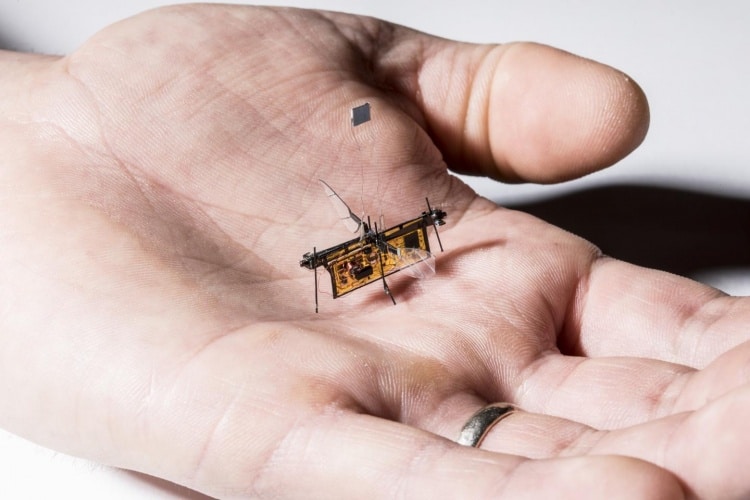Laser energy helps wireless robot insect take flight
Engineers at the University of Washington have used a laser to wirelessly power a robot insect for the first time.


(Credit: Mark Stone/UW)
RoboFly has a tiny photovoltaic cell that coverts energy from a laser beam into electricity to power its flight. Until now, robotic insects such as Harvard’s RoboBee have been tethered to the ground in order to power their tiny bodies, which are too small to carry a requisite power source. But by directing a laser beam at the photovoltaic cell, the UW team was able to deliver enough power for wireless flight.
"Before now, the concept of wireless insect-sized flying robots was science fiction,” said study co-author Sawyer Fuller, an assistant professor in the UW Department of Mechanical Engineering who previously worked on RoboBee. “Would we ever be able to make them work without needing a wire? Our new wireless RoboFly shows they're much closer to real life.”
https://www.theengineer.co.uk/harvard-robobee-aquatic-aerial/
RoboFly works by flapping tiny wings, as rotors and propellers don’t function on this scale. The team designed a circuit that boosted the seven volts coming from the photovoltaic cell up to the 240 volts needed for take-off. A microcontroller on the same circuit allows gives the robot insect a degree of command over its movements, sending voltage in waves to mimic the fluttering of a real insect's wings.
Register now to continue reading
Thanks for visiting The Engineer. You’ve now reached your monthly limit of news stories. Register for free to unlock unlimited access to all of our news coverage, as well as premium content including opinion, in-depth features and special reports.
Benefits of registering
-
In-depth insights and coverage of key emerging trends
-
Unrestricted access to special reports throughout the year
-
Daily technology news delivered straight to your inbox










UK Automotive Feeling The Pinch Of Skills Shortage
Aside from the main point (already well made by Nick Cole) I found this opinion piece a rather clunking read: • Slippery fish are quite easy to...